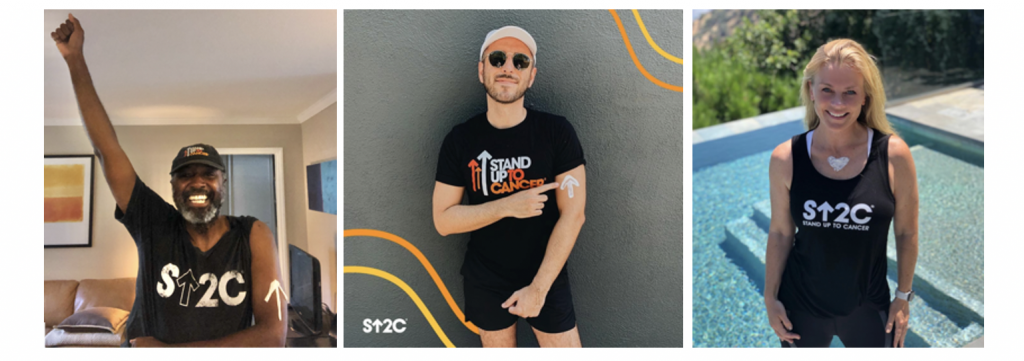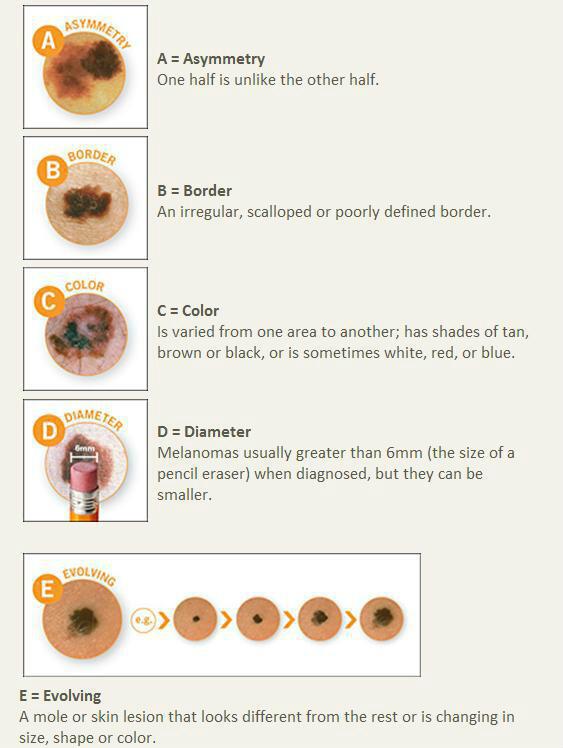
Labor Day weekend is the perfect time to remind yourself of the importance of sun safety. Practicing sun safety throughout the year will give you the best chance of reducing your risk of skin cancer, which is the most commonly diagnosed cancer in the U.S., with 1 in 5 people facing a skin cancer diagnosis before the age of 70. Matthew Block, MD, Ph.D. and Tina Hieken, MD, leaders of the Stand Up To Cancer Melanoma Research Team and oncologists at the Mayo Clinic in Rochester, Minnesota, recommend the below tips for year-round sun safety, especially as more people in the U.S. are spending time outside for socially distanced interaction and exercise in the midst of the COVID-19 pandemic:
- Lather up daily with an SPF 30 sunscreen or higher. Your melanoma risk doubles with only five sunburns, and even if you don’t burn, UV exposure can still raise skin cancer risk. Apply a broad-spectrum sunscreen with both UVA and UVB protection. Apply SPF 30 or higher at least 20 minutes before going outside, and reapply frequently to avoid sunburn. And remember, sunscreen is the best anti-aging product available.
- Protect the skin under and around your mask. While masks can be effective at protecting against some of the sun’s rays, a mask does not cover your full face and can rub off existing sunscreen. Make sure to apply sunscreen to your full face and neck, including the area around your nose and mouth if you’re in an area where it’s safe to remove your mask.
- Cover up for extra protection from the sun’s rays. In addition to your mask, slide on your sunglasses, throw on a hat, and cover your body every day. Consider clothing that’s lightweight, comfortable, and protects against UV exposure even when wet. If you need to be outdoors in the sun, be sure to read the label for the UV protection factor value (UPF).
- Take it inside between 10 a.m. – 4 p.m. Avoid being outdoors during the middle of the day when the sun’s rays are strongest. Remember this rule – If your shadow is shorter than you are, the sun rays are most direct and strong.
- Double-check your medications. There are a number of medications—including antihistamines, cholesterol-lowering drugs, pain relievers, diabetes medications, antibiotics, and more—that can dramatically increase photosensitivity (sensitivity to the sun) and cause sun damage. Even some anti-aging topicals can make your skin more sensitive to the sun’s rays. Check your labels and consult your doctor or pharmacist about possible side effects from any medications you may be taking.
- Avoid tanning beds. As salons start to reopen in some states, it’s important to avoid the tanning bed, which increases the risk of all types of skin cancer, including melanoma. Using a tanning bed before the age of 35 can increase your risk of melanoma by 75%. At all ages, one tanning bed session increases your risk of melanoma by 20% and 10 tanning bed sessions increase your risk of melanoma by 33%. If you’ve previously used tanning beds, consult your dermatologist about your skin cancer risk.

- Remember your ABCDEs: Asymmetry, Border, Color, Diameter, and Evolving. In addition to prevention, regular self-examination is crucial to early detection. If any moles or freckles appear to become asymmetric, change around their border, change in color or diameter, or are otherwise evolving be sure to see your doctor for a professional examination.
- Love and protect the skin you’re in. Skin cancer poses a risk for all ages and skin tones. For example, in the past two decades, research has shown that melanoma diagnoses have increased among the Hispanic community by 20%. While skin cancer is more prevalent in those with lighter skin tones, it’s a common misconception that skin cancer only affects white people. Because of this, skin cancers in people of color tend to be diagnosed at a later stage and, as a result, have worse outcomes. It’s important for all communities to practice sun safety and to visit a dermatologist annually for skin cancer prevention. If you notice any irregularities in your skin, consult a dermatologist immediately. As safety guidelines are constantly shifting due to the COVID-19 pandemic, please follow local ordinances and speak to your doctor about preventative screening to ensure it is safe to get screened at this time.
Steps like these help make fun in the sun safe for everyone. Spread the word about the importance of sun safety; share these Summer Sun Safety tips and more by following Stand Up To Cancer on Facebook, Twitter, and Instagram at @su2c.
About the authors: Matthew Block, MD, Ph.D. and Tina Hieken, MD, are leaders of the Stand Up To Cancer Melanoma Research Team and practicing oncologists at the Mayo Clinic in Rochester, Minnesota. Stand Up To Cancer works relentlessly to offer the newest, most effective, and most promising cancer treatments to patients quickly by bringing together the best minds to collaborate, innovate, and share cancer research.